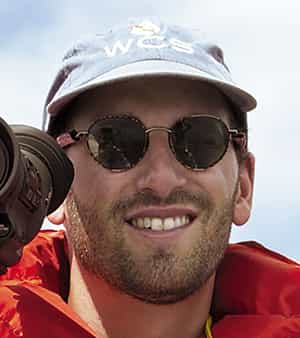No, All Whales Don't Look Alike!
Howard Rosenbaum likes to travel to places where whales gather, like Antongil Bay, off the coast of Madagascar. There, he studies endangered whales like the humpbacks as they migrate from their summer feeding grounds in the Antarctic to their winter feeding grounds in the warm waters of Antongil Bay. Howard and his team have identified over 800 individual whales! All whales may look the same to you and me, but not to Howard. He can tell them apart by looking at their flukes, another name for a whale's tail. Every whale's tail has a unique shape and set of markings, kind of like a fingerprint. Howard hopes to use all of the important information that he gathers in the field to learn how the whales are related and to monitor their populations over many years.
Date of Birth: August 12, 1968
Hometown: Great Neck, NY
Position: conservation biologist with the Wildlife Conservation Society and the American Museum of Natural History
Education: B.S., Yale University; Ph.D., Hamilton College
Known for: studies of humpback whale and right whale populations

How does biologist Howard Rosenbaum collect a DNA sample from a humpback whale?
He uses an arrow to take a skin sample.
He collects water that squirts out the whale's blowhole.
Imitating the humpback language, he asks, "Some DNA, please."
Correct!
Howard uses a crossbow and arrow to collect tissue samples from humpbacks. This may sound painful, but it doesn't hurt the whale a bit. He then studies the DNA from this tissue in the lab.
There may be only a few hundred right whales at best left in the North Pacific, so preserving this endangered species should be a top priority.

Howard Rosenbaum




 Biodiversity
Biodiversity
 Brain
Brain
 Genetics
Genetics
 Marine BiOLogy
Marine BiOLogy
 MicrobiOLogy
MicrobiOLogy
 PaleontOLogy
PaleontOLogy
 ZoOLogy
ZoOLogy
 AnthropOLogy
AnthropOLogy
 ArchaeOLogy
ArchaeOLogy
 Astronomy
Astronomy
 Climate Change
Climate Change
 Earth
Earth
 Physics
Physics
 Water
Water
